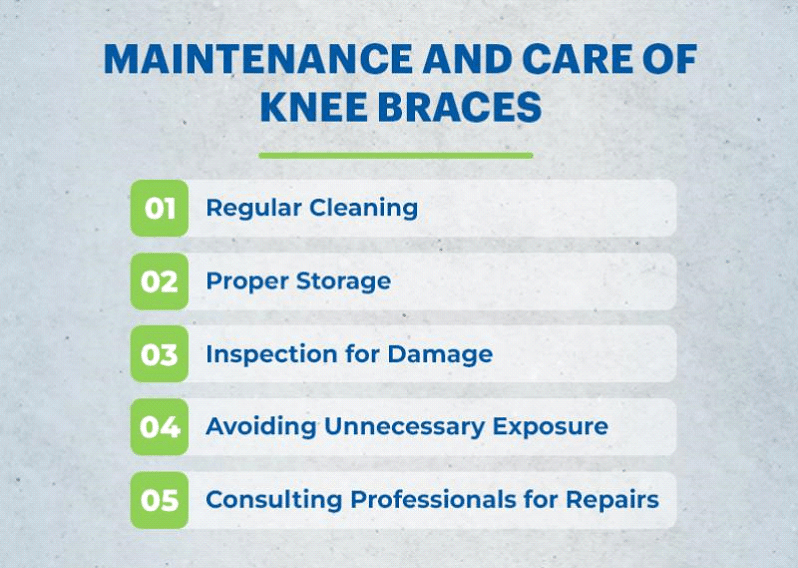Knee braces are vital in addressing various knee-related health issues, offering support and stability that aid in managing pain, enhancing recovery, and improving overall mobility. This article comprehensively explores the different types of knee braces that Medicare covers. It highlights the crucial benefits of these braces in the context of medical treatment and rehabilitation. Furthermore, the article sheds light on the cost-effectiveness of Medicare coverage for knee braces, illustrating how this can make essential healthcare more accessible and affordable for those in need.
Understanding Knee Braces and Their Importance
Knee braces are instrumental in the realm of orthopedic care, offering essential support that aids in the recovery process and mitigates the risk of further injury. Their significance extends beyond mere physical support; they are a key component in the holistic management of knee health. knee braces are more than just a recovery tool; they are an integral part of managing and maintaining knee health. Here are some key advantages:
- Enhancing Recovery: Knee braces are instrumental in providing stability to injured areas, which promotes faster and more effective healing.
- Preventing Re-injury: By offering essential support and stabilization, knee braces play a critical role in reducing the risk of further damage to the knee.
- Support for Chronic Conditions: In the management of chronic conditions such as arthritis, knee braces offer significant relief and support, enhancing daily comfort and mobility.
- Post-Surgery Rehabilitation: Following surgical procedures, knee braces become an indispensable tool in aiding safe mobility and recovery, ensuring that the knee is protected and supported during the rehabilitation process.
- Pain Management: Knee braces are effective in reducing pain, significantly improving the quality of life for individuals with knee-related issues.
- Improved Mobility: With the support of knee braces, individuals can maintain a higher level of activity, which is crucial for overall knee health and well-being.
Types of Knee Braces
Knee braces come in various types, each designed for specific purposes and conditions. Each type of knee brace offers specific benefits and is chosen based on individual medical needs and the nature of the knee problem. Below are the various types of knee braces, each tailored to address specific knee issues:
- Hinged Knee Braces: Provide maximum support and stabilization, ideal for severe knee injuries or post-surgery recovery.
- Compression Sleeves: Offer gentle compression for mild knee pain and swelling.
- Patellar Stabilizing Braces: Designed to support the kneecap, preventing dislocation and reducing pain.
- Functional Braces: Assist in transitioning back to regular activities by stabilizing and protecting the knee.
- Unloader Braces: Specifically designed for arthritis sufferers, they help to relieve pain by redistributing weight away from the affected knee joint.
- Prophylactic Braces: Used in sports, these braces aim to prevent knee injuries by providing support during high-risk activities.
- Rehabilitative Braces: Allow for limited movement of the knee post-injury or surgery, aiding in the healing process.
- Osteoarthritis Braces: Targeted for those with osteoarthritis, these braces help align the knee, reduce pain, and improve function.
- Magnetic Braces: Incorporate magnetic fields, purported to improve circulation and pain relief, though more research is needed to confirm their efficacy.
- Custom-Fitted Braces: Tailored specifically to the individual’s anatomy and specific knee condition, these braces ensure a perfect fit, providing optimal support and comfort.
Advantages of Medicare-Covered Knee Braces
The advantages of Medicare coverage for knee braces extend beyond simple cost savings. Here are some key benefits:

Advantages of medicare covered knee braces.
- Reduced Out-of-Pocket Expenses: Medicare coverage significantly lowers the personal financial burden of purchasing knee braces.
- Access to High-Quality Braces: Ensures beneficiaries have access to medically approved and effective knee braces.
- Wide Range of Options: Medicare coverage includes a variety of brace types to suit different medical needs.
- Ease of Replacement: Under Medicare coverage, replacing braces is easier and more affordable if needed.
- Compliance with Medical Standards: Braces covered are assured to meet specific medical and safety standards.
- Support in Rehabilitation: Financial support for braces aids in uninterrupted rehabilitation and therapy processes.
Medicare Coverage and Eligibility
Medicare is a federal health insurance program for people who are 65 years or older or those who have a qualifying disability, End-Stage Renal Disease (ESRD), or ALS (Lou Gehrig’s Disease).
To enroll in Medicare, you can apply online or visit your local Social Security office. The enrollment period begins three months before you turn 65 and ends three months after the month you turn 65. If you miss your initial enrollment period, you may have to pay a penalty.
Medicare is divided into four parts:
- Part A: Insurance for hospitalization, home or skilled nursing, and hospice.
- Part B: Medical insurance.
- Part C: Private insurance option for covering hospital and medical costs.
- Part D: Prescription medication coverage.
You can learn more about the parts of Medicare, how it works, what it costs, and how to prepare to sign up by visiting the official Medicare website.
Choosing the Right Knee Brace
Selecting the appropriate knee brace involves a combination of professional guidance and personal considerations. Here are five key points to consider:
- Professional Consultation: Always seek advice from healthcare professionals to determine the most suitable brace type for your condition.
- Assessing Comfort and Fit: Comfort is crucial. Ensure the brace fits well without causing discomfort or restricting movement excessively.
- Consideration of Specific Knee Condition: Different knee issues require different types of support. It’s important to choose a brace that addresses your specific condition effectively.
- Adjustability and Ease of Use: Look for braces that offer adjustability to accommodate swelling or pain level changes.
- Durability and Quality: Consider the quality and durability of the brace, especially if it’s needed for long-term use.

A white background with blue text and green text.
Maintenance and Care of Knee Braces
Proper maintenance and care are essential for ensuring the effectiveness and longevity of knee braces. Here are five key points to consider:
- Regular Cleaning: Follow the manufacturer’s guidelines for cleaning to maintain hygiene and material integrity.
- Proper Storage: Store the brace in a cool, dry place away from direct sunlight to prevent material damage.
- Inspection for Damage: Regularly check for any signs of wear and tear, such as fraying straps or weakened hinges.
- Avoiding Unnecessary Exposure: Keep the brace away from harsh chemicals and extreme temperatures, which can degrade the materials.
- Consulting Professionals for Repairs: If there is significant damage, consult a professional for repair or replacement advice, as continuing to use a damaged brace can be ineffective or even harmful.
Maintaining your knee brace through these steps will ensure that it remains effective and safe to use.
Read More: How Knee Braces Help Seniors Avoid Injury and Perform Better?
Innovations in Knee Brace Technology
The field of knee brace technology has seen remarkable advancements, significantly enhancing both support and comfort for users. Key developments include:
- Advanced Materials: Utilization of lighter yet more durable materials, making braces more comfortable and less intrusive.
- Ergonomic Design: Braces are now more adept at conforming to the body’s natural movements, offering better support without restricting mobility.
- Enhanced Comfort Features: Incorporation of ventilation systems and moisture-wicking fabrics to keep the skin dry and comfortable.
- Smart Technology Integration: The development of smart knee braces equipped with sensors provides real-time data for better adjustment and monitoring.
- Customization and 3D Printing: Personalized brace fitting using 3D printing technology, ensuring each brace is perfectly tailored to the individual’s anatomy.
These technological advancements not only improve the current effectiveness of knee braces but also pave the way for future innovations that could revolutionize orthopedic care and rehabilitation.
Conclusion
In conclusion, Medicare’s provision for knee brace coverage stands as a beacon of accessible and cost-effective healthcare solutions for those dealing with knee-related issues. It empowers individuals to select the most appropriate brace tailored to their specific needs, ensuring an optimal balance between comfort, functionality, and recovery support. This thoughtful selection process is crucial in enhancing the effectiveness of the knee brace, thereby facilitating a smoother and more efficient recovery journey.
SEO Key Phrases
- Medicare knee brace types
- Hinged brace Medicare coverage
- Compression knee sleeves
- Patellar stabilising braces
- Functional knee support
- Medicare brace eligibility
- Affordable knee pain solutions
- Knee brace benefits and care







